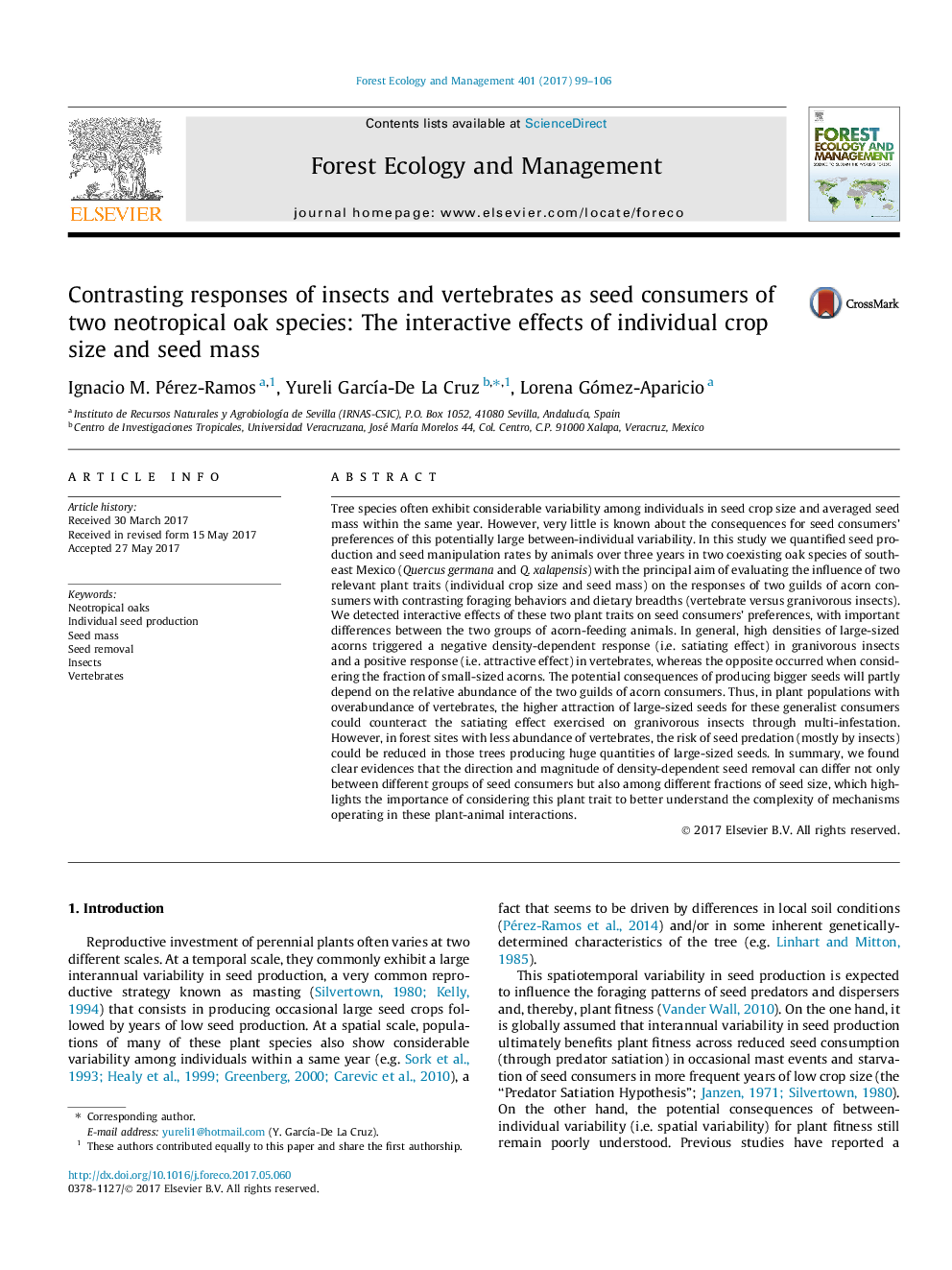| کد مقاله | کد نشریه | سال انتشار | مقاله انگلیسی | نسخه تمام متن |
|---|---|---|---|---|
| 4759304 | 1421357 | 2017 | 8 صفحه PDF | دانلود رایگان |
عنوان انگلیسی مقاله ISI
Contrasting responses of insects and vertebrates as seed consumers of two neotropical oak species: The interactive effects of individual crop size and seed mass
ترجمه فارسی عنوان
پاسخ های متضاد حشرات و مهره داران به عنوان مصرف کنندگان بذر دو گونه بلوط نئوتروپیک: اثرات تعاملی اندازه محصول فرد و توده دانه
دانلود مقاله + سفارش ترجمه
دانلود مقاله ISI انگلیسی
رایگان برای ایرانیان
کلمات کلیدی
بلوط نئوپروپیک، تولید بذر فردی، توده دانه حذف دانه، حشرات، مهره داران،
موضوعات مرتبط
علوم زیستی و بیوفناوری
علوم کشاورزی و بیولوژیک
بوم شناسی، تکامل، رفتار و سامانه شناسی
چکیده انگلیسی
Tree species often exhibit considerable variability among individuals in seed crop size and averaged seed mass within the same year. However, very little is known about the consequences for seed consumers' preferences of this potentially large between-individual variability. In this study we quantified seed production and seed manipulation rates by animals over three years in two coexisting oak species of southeast Mexico (Quercus germana and Q. xalapensis) with the principal aim of evaluating the influence of two relevant plant traits (individual crop size and seed mass) on the responses of two guilds of acorn consumers with contrasting foraging behaviors and dietary breadths (vertebrate versus granivorous insects). We detected interactive effects of these two plant traits on seed consumers' preferences, with important differences between the two groups of acorn-feeding animals. In general, high densities of large-sized acorns triggered a negative density-dependent response (i.e. satiating effect) in granivorous insects and a positive response (i.e. attractive effect) in vertebrates, whereas the opposite occurred when considering the fraction of small-sized acorns. The potential consequences of producing bigger seeds will partly depend on the relative abundance of the two guilds of acorn consumers. Thus, in plant populations with overabundance of vertebrates, the higher attraction of large-sized seeds for these generalist consumers could counteract the satiating effect exercised on granivorous insects through multi-infestation. However, in forest sites with less abundance of vertebrates, the risk of seed predation (mostly by insects) could be reduced in those trees producing huge quantities of large-sized seeds. In summary, we found clear evidences that the direction and magnitude of density-dependent seed removal can differ not only between different groups of seed consumers but also among different fractions of seed size, which highlights the importance of considering this plant trait to better understand the complexity of mechanisms operating in these plant-animal interactions.
ناشر
Database: Elsevier - ScienceDirect (ساینس دایرکت)
Journal: Forest Ecology and Management - Volume 401, 1 October 2017, Pages 99-106
Journal: Forest Ecology and Management - Volume 401, 1 October 2017, Pages 99-106
نویسندگان
Ignacio M. Pérez-Ramos, Yureli GarcÃa-De La Cruz, Lorena Gómez-Aparicio,
